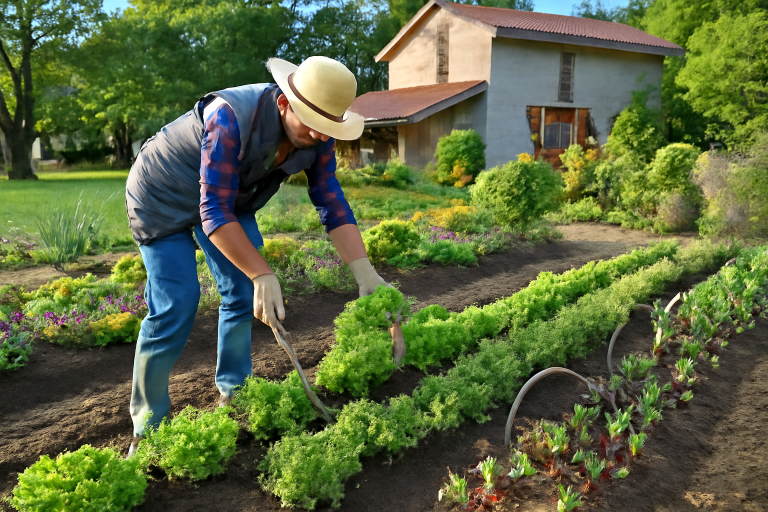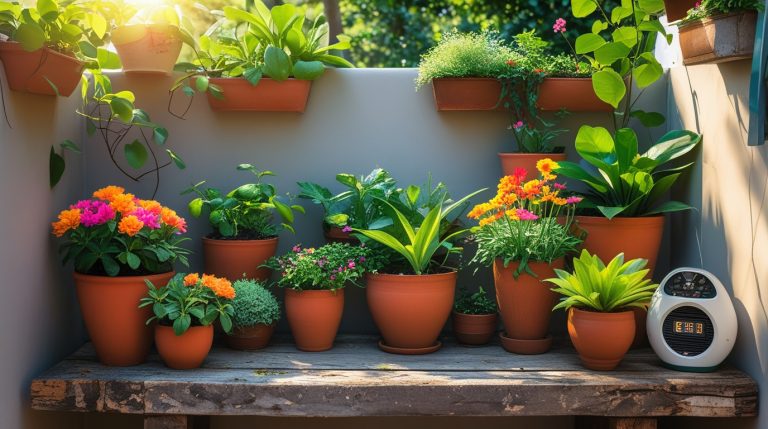

Gardening is an incredibly rewarding hobby that allows you to connect with nature while adding beauty and functionality to your home. However, it can sometimes feel like a costly endeavor, with the price of plants, garden furniture, and tools quickly adding up. The good news is that creating a beautiful and organized garden doesn’t have to be expensive. By using a few cost-effective strategies and getting creative, you can transform your garden into a peaceful retreat without breaking the bank.
In this guide, we’ll share practical and budget-friendly tips to help you organize your home garden while keeping costs low. With a little time, patience, and some DIY skills, you’ll be able to create a garden that looks fantastic and suits your needs.
One of the easiest and most affordable ways to organize your garden is by reusing and repurposing materials that you already have on hand. Repurposing items you no longer need or use helps reduce waste, and it allows you to save money while still achieving a stylish look.
For example, old wooden pallets can be turned into vertical gardens or used as garden furniture. Old tin cans or glass jars can be repurposed as plant pots or used to create decorative planters. By thinking outside the box, you can give new life to old items that would otherwise be thrown away.
If you have some unused wooden planks or crates lying around, you can easily transform them into raised garden beds or even a compost bin. The key to repurposing materials is to get creative and look at things in a new light.
When planning your garden, consider choosing perennials over annuals. Perennials are plants that come back year after year, which means they require less maintenance and fewer replacements. Though perennials may be more expensive upfront than annuals, they are an excellent investment in the long run, as they will save you money over time.
Some of the best perennial plants for home gardens include lavender, hostas, daylilies, and coneflowers. These plants are not only beautiful, but they are also hardy, low-maintenance, and ideal for any climate. By selecting perennial plants, you can enjoy a colorful and vibrant garden year after year without having to replant everything each season.
Instead of purchasing mature plants from garden centers, starting plants from seeds can save you a significant amount of money. Growing your plants from seed gives you a much wider selection of flowers, vegetables, and herbs to choose from. You can even start plants indoors and transfer them to your garden later, which gives you a jump start on the growing season.
Starting from seeds may require more patience, but it’s an enjoyable process that allows you to nurture your plants from the very beginning. Seed packets are generally inexpensive, and with proper care, the seeds will grow into healthy, strong plants.
Composting is an eco-friendly and budget-friendly way to improve your garden’s soil quality while reducing waste. Instead of buying expensive fertilizers, you can create your own nutrient-rich compost using kitchen scraps, yard waste, and organic materials.
Composting not only provides your plants with the nutrients they need to thrive, but it also helps retain moisture in the soil and reduces the need for chemical fertilizers. Composting is a simple process that requires little maintenance. Simply gather organic materials, such as fruit and vegetable peels, coffee grounds, grass clippings, and leaves, and allow them to decompose in a compost bin or pile. In a few months, you’ll have rich, dark compost that will help your garden grow.
Another great way to save money when organizing your garden is to buy garden supplies in bulk. Items such as soil, mulch, compost, and even seeds are often cheaper when purchased in larger quantities. When planning your garden, make a list of everything you’ll need and purchase it all at once, so you can take advantage of bulk pricing.
Planning ahead also helps prevent impulse purchases that can quickly add up. For example, you can buy seeds for the following season in advance, which allows you to avoid higher prices during peak gardening months. Bulk purchases not only save you money, but they also reduce the need for frequent trips to the garden center.
Mulch is a great way to control weeds, retain moisture in the soil, and improve the overall appearance of your garden. It’s also an affordable option for garden maintenance. Mulch helps suppress weed growth by blocking sunlight, preventing weeds from germinating.
There are many types of mulch available, but you don’t need to buy expensive options from garden stores. Instead, you can use organic materials like grass clippings, leaves, straw, or wood chips. These materials can be easily found around your home or yard and are often free or very cheap. Apply mulch around your plants and flower beds, and it will keep the soil healthy while reducing the need for constant weeding.
If you’re looking to create a low-cost and low-maintenance garden, choosing the right plants is key. Certain plants require less care and attention, making them perfect for busy gardeners. Look for drought-tolerant, pest-resistant, and hardy plants that can thrive in your climate.
Some excellent low-maintenance plants include succulents, lavender, hostas, and ornamental grasses. These plants are not only beautiful, but they also require minimal watering, fertilizing, and pruning, saving you both time and money.
Instead of purchasing expensive garden decorations, you can create your own DIY decorations using items you already have. For example, you can make a garden sculpture using old bottles, stones, or even recycled plastic. These projects are fun, eco-friendly, and allow you to personalize your garden.
You can also create handmade garden signs, birdhouses, or planters to add character to your outdoor space. With a little creativity, you can craft unique garden decorations that reflect your personal style.
Organizing and maintaining a beautiful garden doesn’t have to be an expensive endeavor. By reusing materials, planting perennials, growing your own plants from seeds, and making your own compost, you can create a stunning garden without spending a fortune. Focus on low-maintenance plants and incorporate DIY garden decorations to add personality to your space.
With these tips, you’ll have a beautiful and organized garden that you can enjoy for years to come—without breaking the bank. All it takes is a little creativity and planning to turn your garden into the perfect outdoor retreat.